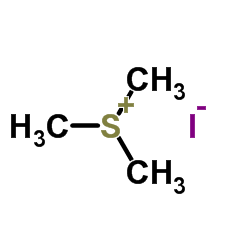Prebiotic methylation and the evolution of methyl transfer reactions in living cells.
T G Waddell, L L Eilders, B P Patel, M Sims
Index: Orig. Life Evol. Biosph. 30(6) , 539-48, (2000)
Full Text: HTML
Abstract
An hypothesis is presented for the prebiotic origin of methyl groups and the evolution of methyl transfer reactions in living cells. This hypothesis, described in terms of prebiotic and early biotic chemical evolution, is based on experimental observations in our lab and in those of others, and on the mechanisms of enzymatic methyl transfer reactions that occur in living cells. Of particular interest is our demonstration of the reductive methylation of ethanolamine and glycine in aqueous solution by excess formaldehyde. These reactions, involving prebiotic compounds and conditions, are mechanistically analogous to the de novo origin of methyl groups in modern cells by reduction of methylene tetrahydrofolate. Furthermore, modern cellular methyl transfers from S-adenosylmethionine to amine nitrogen may involve formaldehyde as an intermediate and subsequent reductive methylation, analogous to the prebiotic chemistry observed herein.
Related Compounds
| Structure | Name/CAS No. | Molecular Formula | Articles |
|---|---|---|---|
 |
Trimethylsulfonium iodide
CAS:2181-42-2 |
C3H9IS |
|
Interferences in the direct quantification of bisphenol S in...
2013-02-01 [J. Chromatogr. A. 1275 , 70-7, (2013)] |
|
A high-throughput fatty acid profiling screen reveals novel ...
2014-11-01 [Eukaryotic Cell 13(11) , 1431-8, (2014)] |
|
S-methyl derivatives from thiol compounds by the pyrolytic r...
1998-10-01 [Lipids 33(10) , 1037-41, (1998)] |
|
Evaluation of the cholinomimetic actions of trimethylsulfoni...
2002-04-01 [Braz. J. Med. Biol. Res. 35(4) , 485-91, (2002)] |
|
Rapid identification of Legionella species from a single col...
2013-01-01 [J. Med. Microbiol. 36(6) , 371-6, (1992)] |